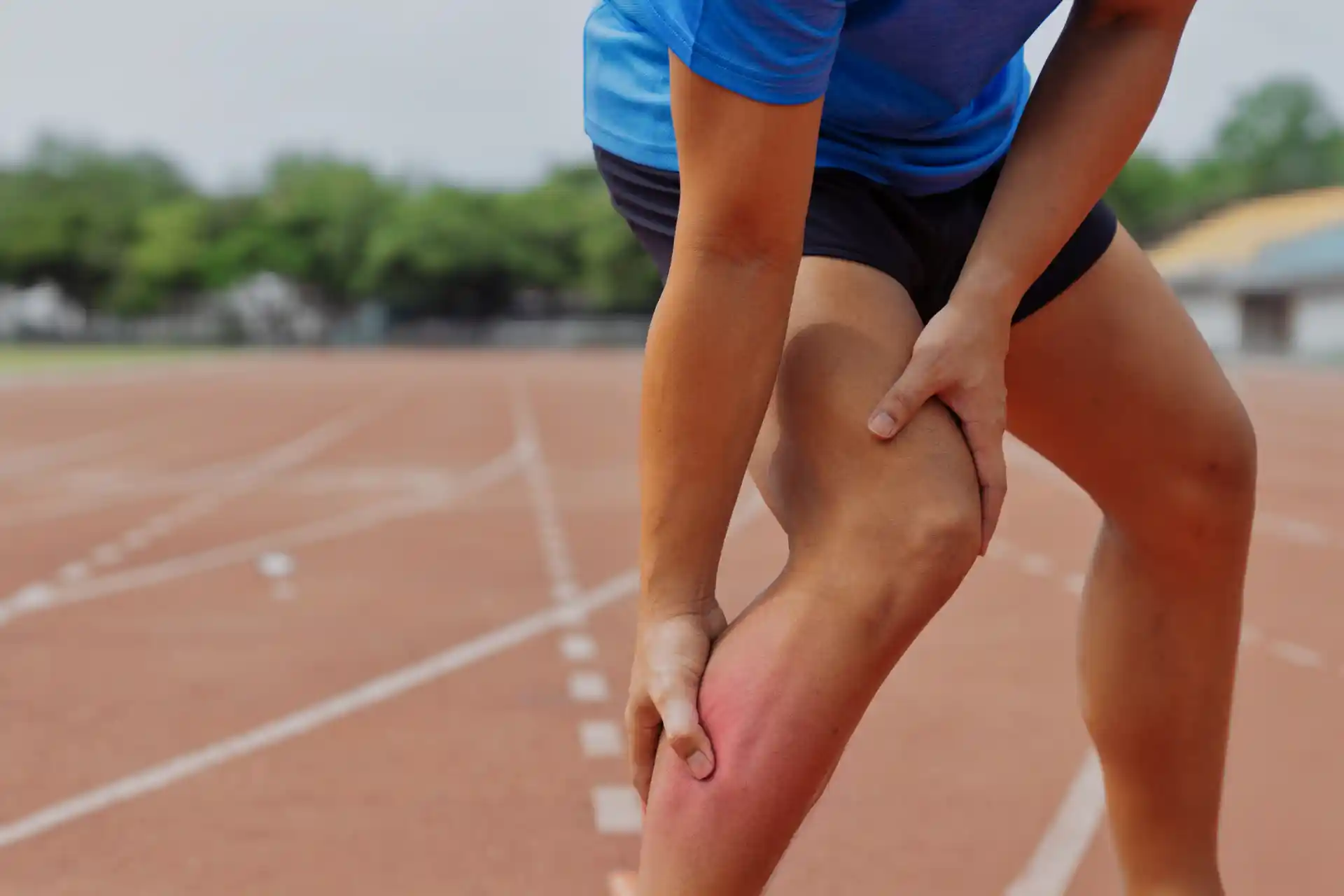Understand Small Fiber Neuropathy
Small fiber neuropathy is a nerve disorder that affects the thin, delicate nerve fibers responsible for sensations like temperature and pain.
You might notice odd tingling, stinging, or burning in your feet and hands, sometimes triggered by the slightest brush of fabric or a cool draft. Researchers have reported anywhere from 12 to 53 cases per 100,000 people per year (NCBI Bookshelf), though many experts suspect the condition is underdiagnosed.
The good news, even if these sensations sound intimidating, is that effective treatments and self-care strategies exist to help you take charge of your symptoms and overall well-being.
Key Symptoms And Signs
When small fiber neuropathy attacks, you might notice symptoms that range from mild to distressing. Because these fibers carry pain and temperature signals, your discomfort can show up in various forms:
- Burning or tingling: Often felt in the feet or hands.
- Electric-shock or pinprick jolts: Sudden, sharp nerve misfires.
- Allodynia (pain from light touch): Clothing, bedsheets, or even air drafts can feel painful.
- Numb patches: Trouble sensing heat, cold, or injury.
- Worse at night: Symptoms often intensify in the evening.
- Autonomic signs: Dizziness, unusual sweating, or digestive changes may occur since small fibers also regulate automatic body functions (Cleveland Clinic).
Recognizing these signals early helps you and your care team act before discomfort escalates.
If you have these symptoms in your feet, you may also find helpful information under numbness in feet.
Potential Causes And Risks
Small fiber neuropathy can develop from a wide range of causes. At least half of all cases stem from an underlying medical concern, while the rest are labelled “idiopathic,” meaning no specific culprit can be found.
Common contributors include:
- Diabetes or prediabetes: A leading trigger due to long-term high blood sugar. Check out diabetic neuropathy for more information.
- Vitamin imbalances: Too little B12 or too much B6 can harm nerves.
- Autoimmune diseases: Conditions like Sjögren’s syndrome can inflame and damage nerve fibers.
- Toxins and medications: Certain chemotherapy drugs and environmental toxins are known culprits.
- Genetic factors: Inherited mutations may alter how nerves signal.
Identifying the root cause is vital—treating it often reduces symptoms and slows nerve damage.
If you have any underlying condition—whether it’s diabetes, celiac disease, or HIV—controlling that root problem often helps relieve some of the nerve pain.
To learn more about other nerve-related conditions, check out our articles on nerve compression, sciatica, hip impingement, and carpal tunnel syndrome.
How Diagnosis Works
Diagnostic tools are fairly straightforward and can include a physical exam, medical history, and specialized tests.
Confirming small fiber neuropathy involves checking your overall nerve health, since large nerves may appear normal even when small ones misfire.
- Clinical exam: Reviews symptoms and medical history.
- Nerve conduction study (NCS) & electromyography (EMG): Usually normal in small fiber neuropathy but help rule out large fiber damage.
- Lab tests: Screen for diabetes, vitamin deficiencies, or autoimmune markers.
Testing ensures you get the right treatment plan and not a generic one-size-fits-all approach.
The Role Of Skin Biopsy
Skin biopsy is considered one of the most accurate ways to confirm small fiber neuropathy. It’s painless, involving a tiny sample from your lower leg (or sometimes from other spots), which is examined for nerve fiber density.
This test can diagnose small fiber neuropathy with about 90% accuracy. It can also show if your nerve fibers are regenerating once you start treatment (The Foundation for Peripheral Neuropathy).
Beyond biopsy, you might also encounter a specialized sweat test called a quantitative sudomotor axon reflex test (QSART). This method measures how your nerves respond to stimuli that should prompt sweating. If something is off, it can be one more clue supporting your diagnosis.
Explore Treatment Options
Once you have a clear diagnosis, you can start exploring treatments that fit your unique symptoms. Doctors often recommend a combination of medication, physical therapy, and lifestyle shifts to reduce pain.
Because pain can vary from mild pins-and-needles to severe burning, let your medical team know exactly what you feel so they can customize an approach—and keep your spirits high in the process.
Medications And Topical Therapies
Many people begin with medication to calm nerve-related symptoms. Depending on your situation, you might be offered:
- Antidepressants (e.g., duloxetine, nortriptyline): Interrupt pain signaling.
- Anticonvulsants (e.g., gabapentin, pregabalin): Calm overactive nerves.
- Topical lidocaine creams or patches: Numb painful areas without whole-body effects (Mayo Clinic).
- NSAIDs: Useful for milder discomfort.
- Opioids: Reserved for severe cases, with caution due to dependency risks.
In some cases, healthcare providers might also suggest complementary therapies, like low-impact massage or gentle acupuncture, to help lessen discomfort.
For individuals experiencing more widespread nerve issues, a “pain management program” is sometimes recommended. These programs can include therapy, counseling, or biofeedback to teach you coping strategies.
Fascial Hydrodissection
This fluid-based treatment can release adhered fascia and soft tissue that can press on nerves—helping reduce tingling, burning, numbness, and pain associated with small fiber neuropathy and other peripheral neuropathy conditions.1-7
Self-Care And Lifestyle Steps
Medication alone might not solve your nerve issues. Self-care makes a big difference too, especially when it comes to controlling blood sugar levels and maintaining a balanced diet.
You can help improve nerve function by focusing on these pillars:
- Regular movement: Walking, swimming, or light exercise (20–30 minutes most days) improves circulation and nerve health.
- Balanced diet: Focus on lean proteins, whole grains, nuts, and leafy greens. Ensure safe vitamin B12 intake and avoid excess B6.
- Blood sugar control: Especially crucial if you have diabetes; stable glucose reduces nerve damage.
- Minimize triggers: Avoid extreme hot/cold; wear soft clothing; use a bed cradle to keep sheets off sensitive feet.
- Limit alcohol: Heavy drinking worsens nerve injury; moderate or avoid if possible.
- Quit smoking: Improves circulation and nerve recovery.
- Manage stress: Meditation, yoga, and breathing exercises reduce pain perception.
If you and your specialists suspect something more complex going on, such as reflex sympathetic dystrophy or chronic regional pain syndrome, you might explore resources around CRPS treatment or other targeted support.
Working with a multidisciplinary team (neurologists, nutritionists, physical therapists) can bring even more relief.
Take Your Next Steps
Living with small fiber neuropathy may feel daunting, but with the right plan, you can improve comfort and function.
- Identify and treat underlying causes: Diabetes, vitamin imbalances, or autoimmune conditions should be addressed first.
- Customize pain management: Keep a diary of your sensations and share with your doctor.
- Build supportive routines: Combine balanced nutrition, gentle activity, and home adjustments.
- Stay alert to overlaps: CMT, CRPS, or other neuropathies may complicate symptoms—ongoing dialogue with your care team is key.
- Track your progress: Celebrate small wins, like fewer nighttime flare-ups or better sleep.
The journey takes time, but every step—whether dietary, therapeutic, or lifestyle-focused—helps move you closer to lasting relief.
Taking control of small fiber neuropathy is a journey. You’ll likely experiment with different medication combos, gentle exercises, and dietary shifts until you find comfort.
Give yourself some grace during this process—you’re making positive changes, and every tweak you make to your routine can relieve your discomfort a little more.
Seek RELIEF®
RELIEF® is a science-backed treatment that targets dysfunctional fascia, which may contribute to nerve irritation and peripheral neuropathy.
Using a gentle technique called hydrodissection, RELIEF® releases adhered fascia and soft tissue that can press on nerves—helping reduce tingling, burning, numbness, and pain associated with FA and other peripheral neuropathy conditions.1-7
RELIEF® is a minimally invasive alternative to traditional treatments and does not require steroids, long-term medication, surgery, anesthesia, or post-procedure immobilization.
If you’re in the Miami area and seeking relief from peripheral neuropathy, contact us today to schedule a consultation.





.jpg)
.svg)